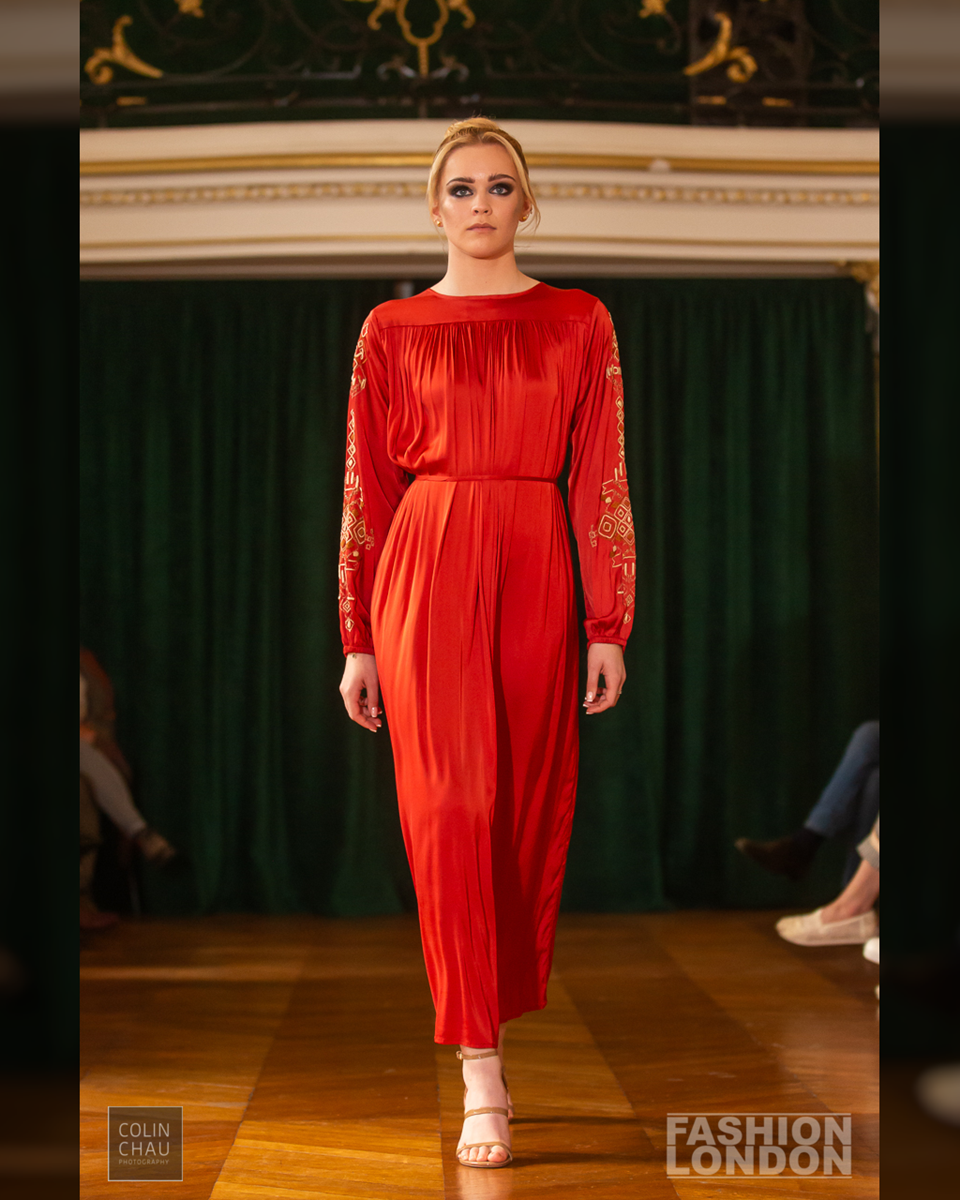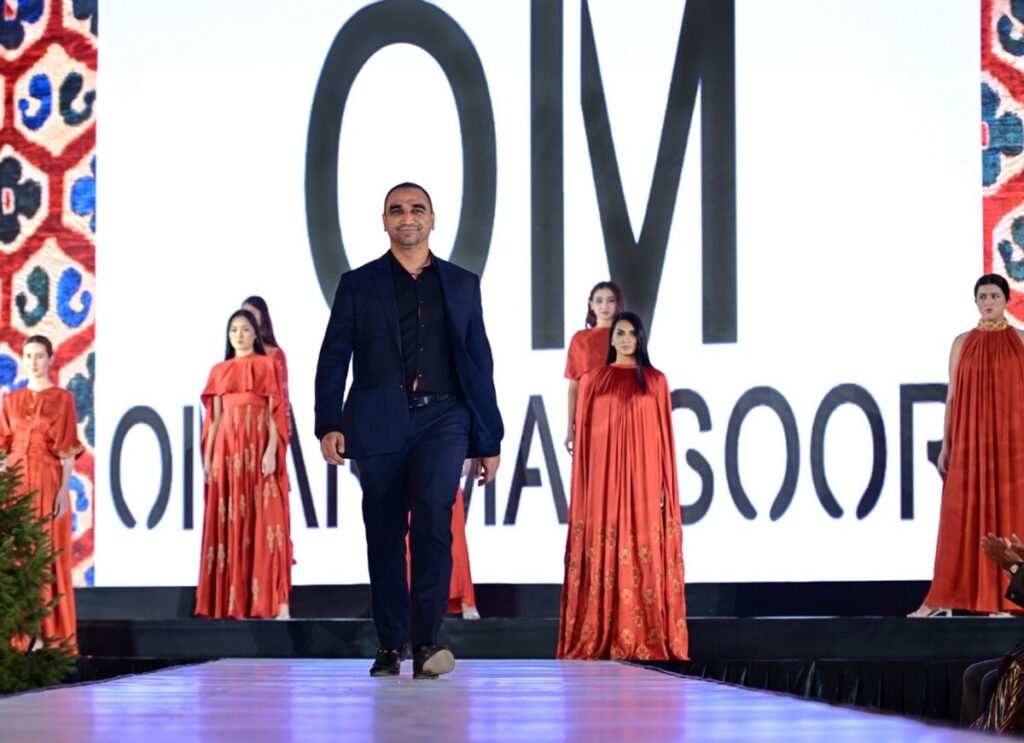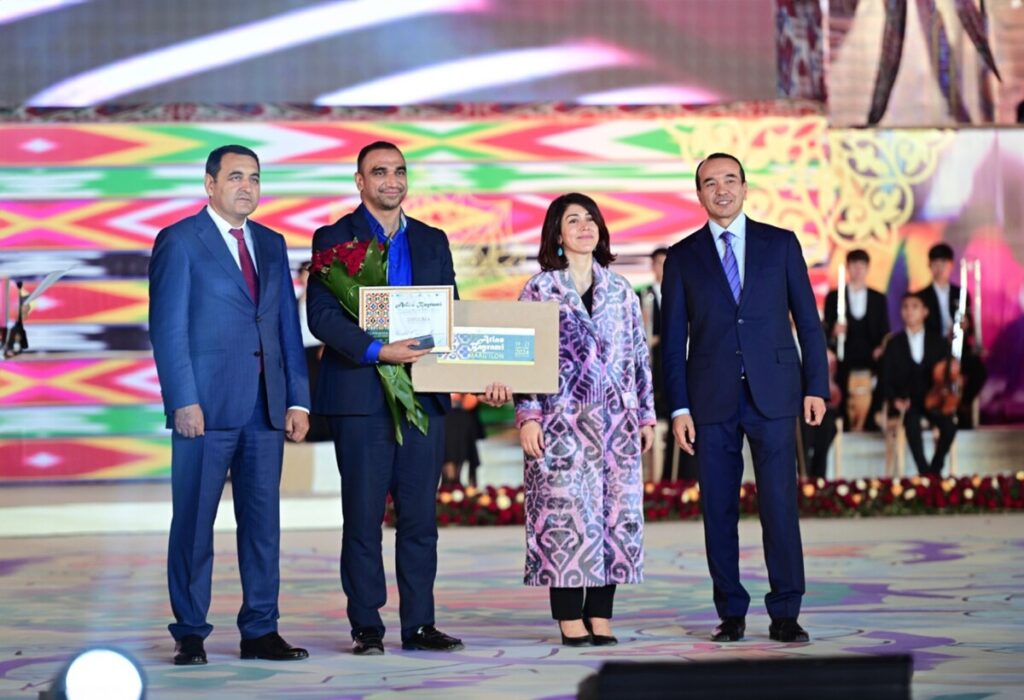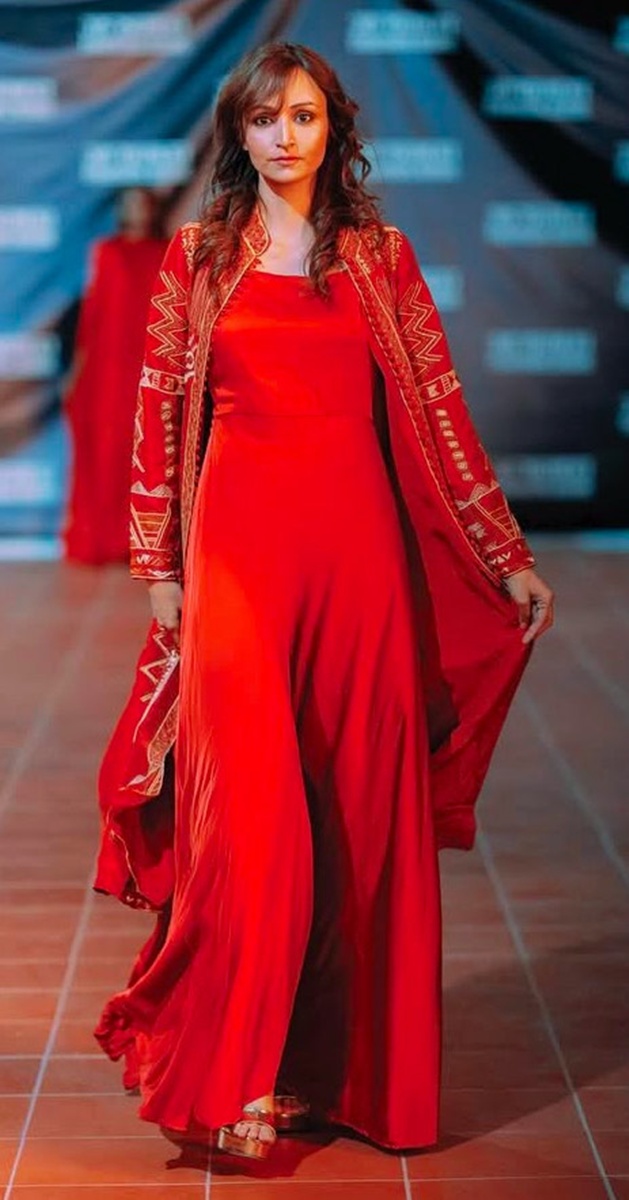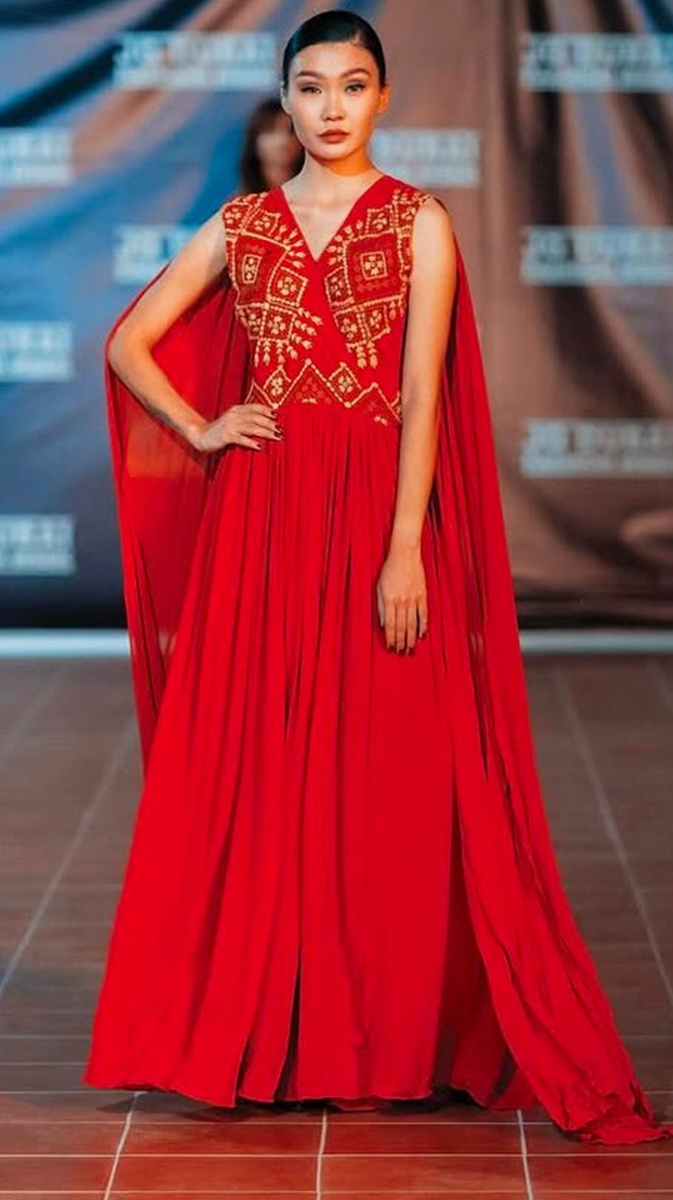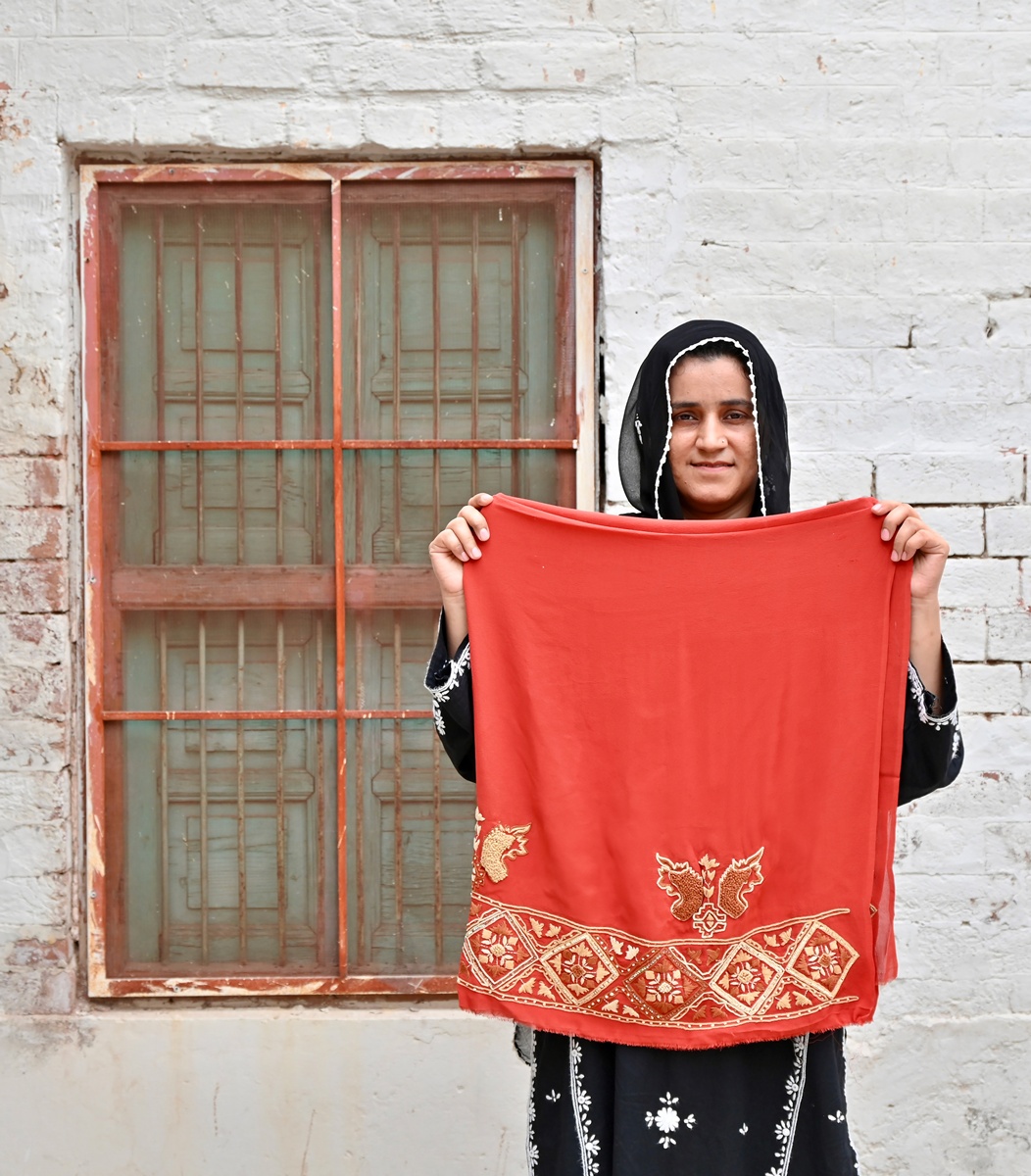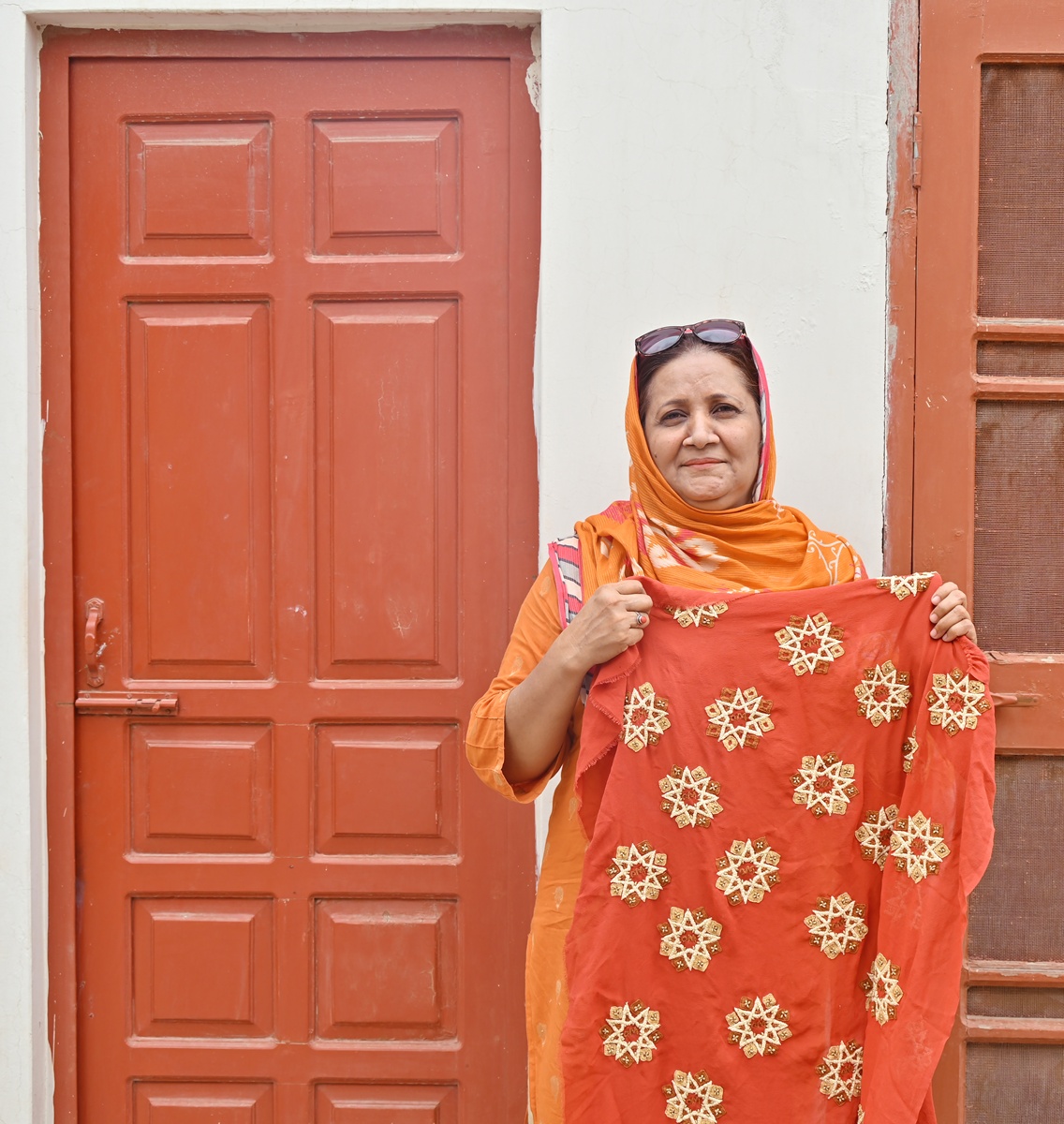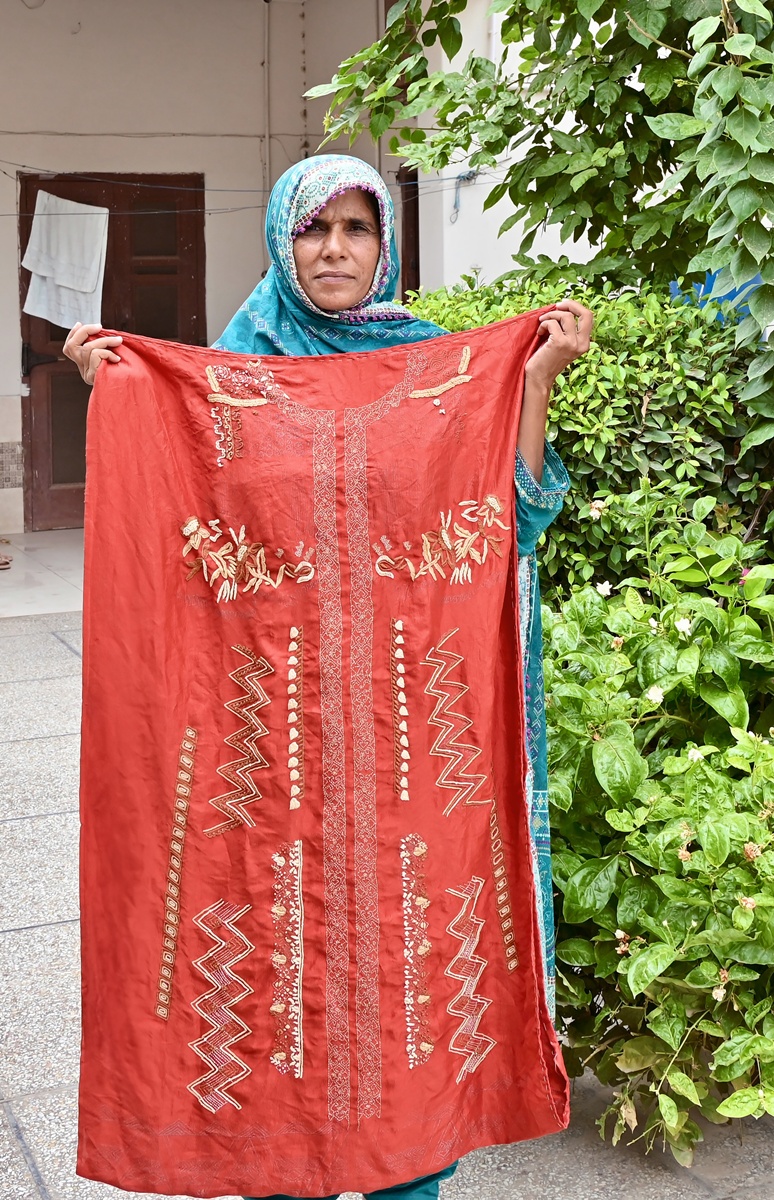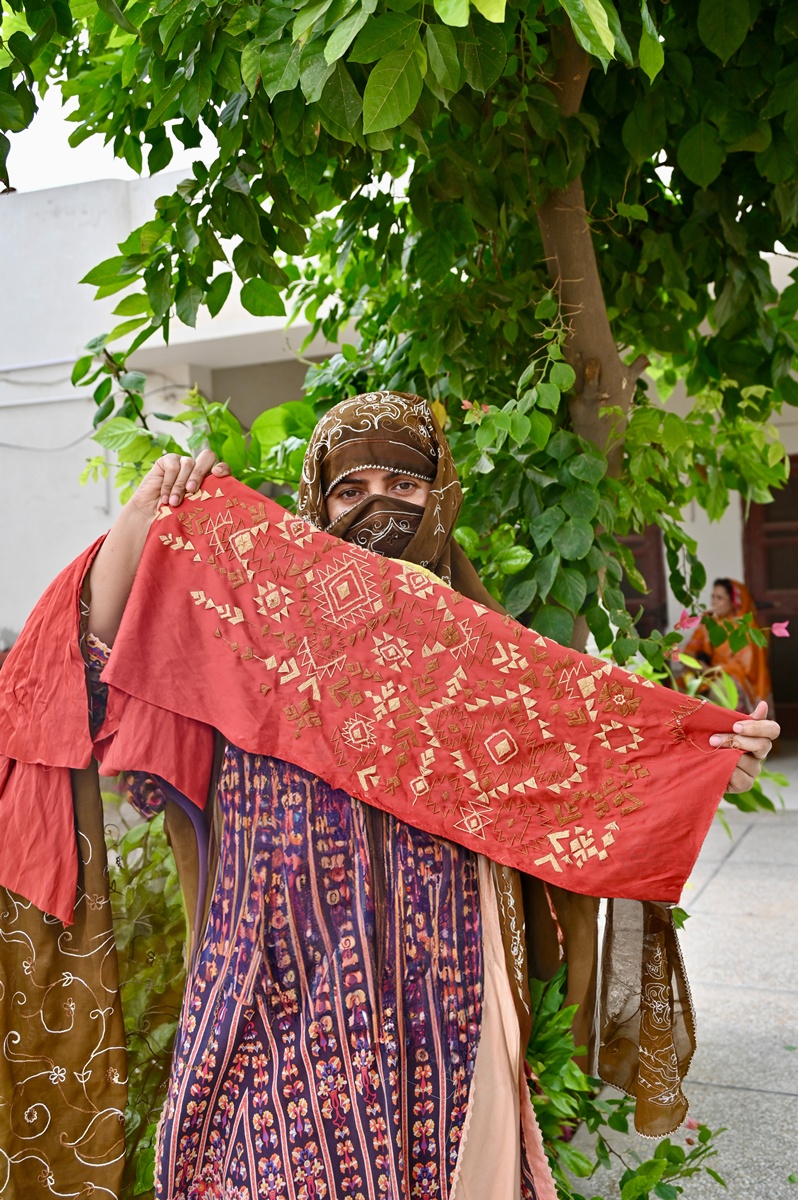♦ How did the atmosphere and reception differ in London, Uzbekistan, Paris, and Dubai?
Each city has unique energy—London’s electric and enigmatic, Uzbekistan’s subtle and conservative charm, Paris’ polished elegance, and Dubai’s dazzling fusion of traditional and contemporary design. Each city brought a fresh perspective, helping shape how we communicate the collection globally.
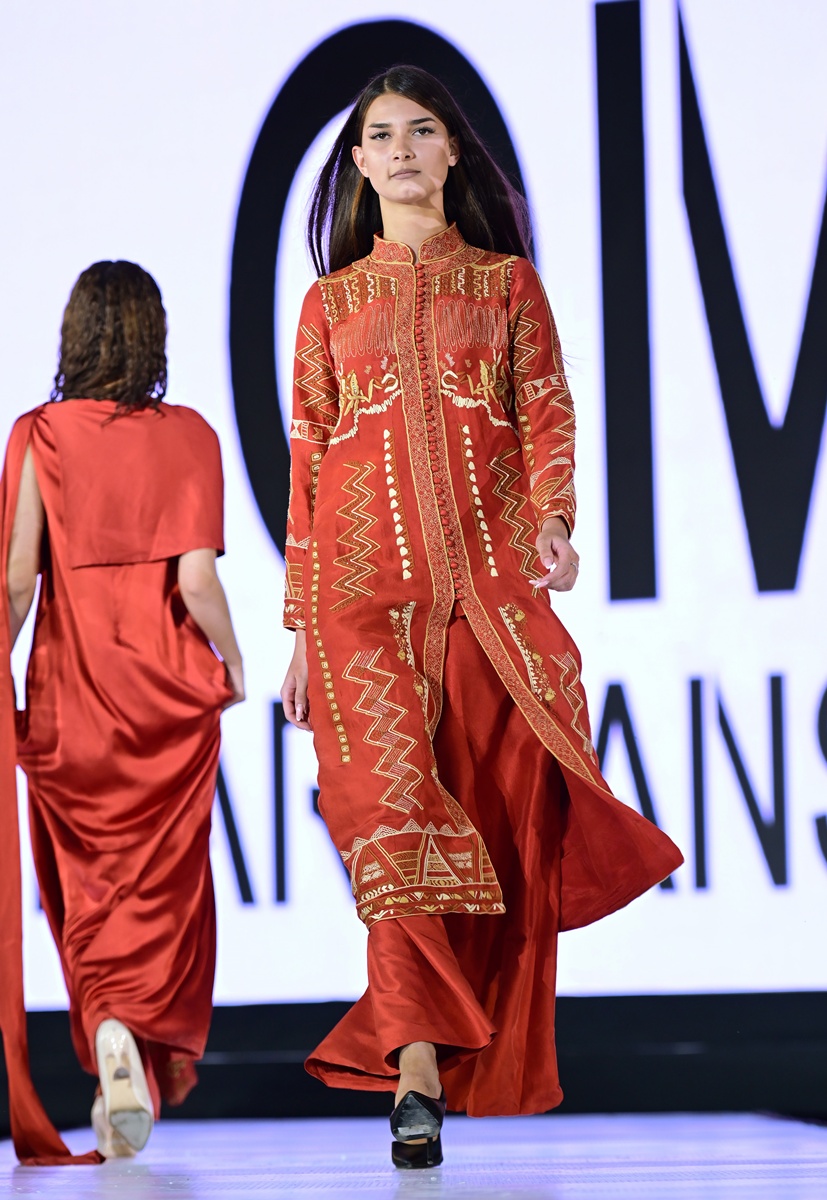
Meluhas Collection by Omar Mansoor at Uzbekistan, photo credits® Husniddin Ato.
♦ What inspired your selection of these fashion tour locations, and how do they connect to the collection’s narrative?
The Meluhas Collection is versatile—catering to different tastes, from minimalist to maximalist, modern to conservative. I selected these cities as they are fashion-forward yet deeply connected to craftsmanship and cultural heritage. They are places where the story of grassroots artisans and ancient craftsmanship is appreciated and celebrated.
Meluhas Collection by Omar Mansoor at the Amwaj Rotana Hotel Dubai
♦ Could you share with us the personal significance of the Indus Valley in your life and how you translate its cultural heritage into wearable fashion?
The Indus Valley has always profoundly influenced me, especially after visiting Harappa in 2002. The intricate craftsmanship, town planning, and recovered ornaments sparked a deep curiosity that grew through my visits to museums in London and Lahore. These influences, alongside research by archaeologists, guided me in translating ancient designs into contemporary fashion.
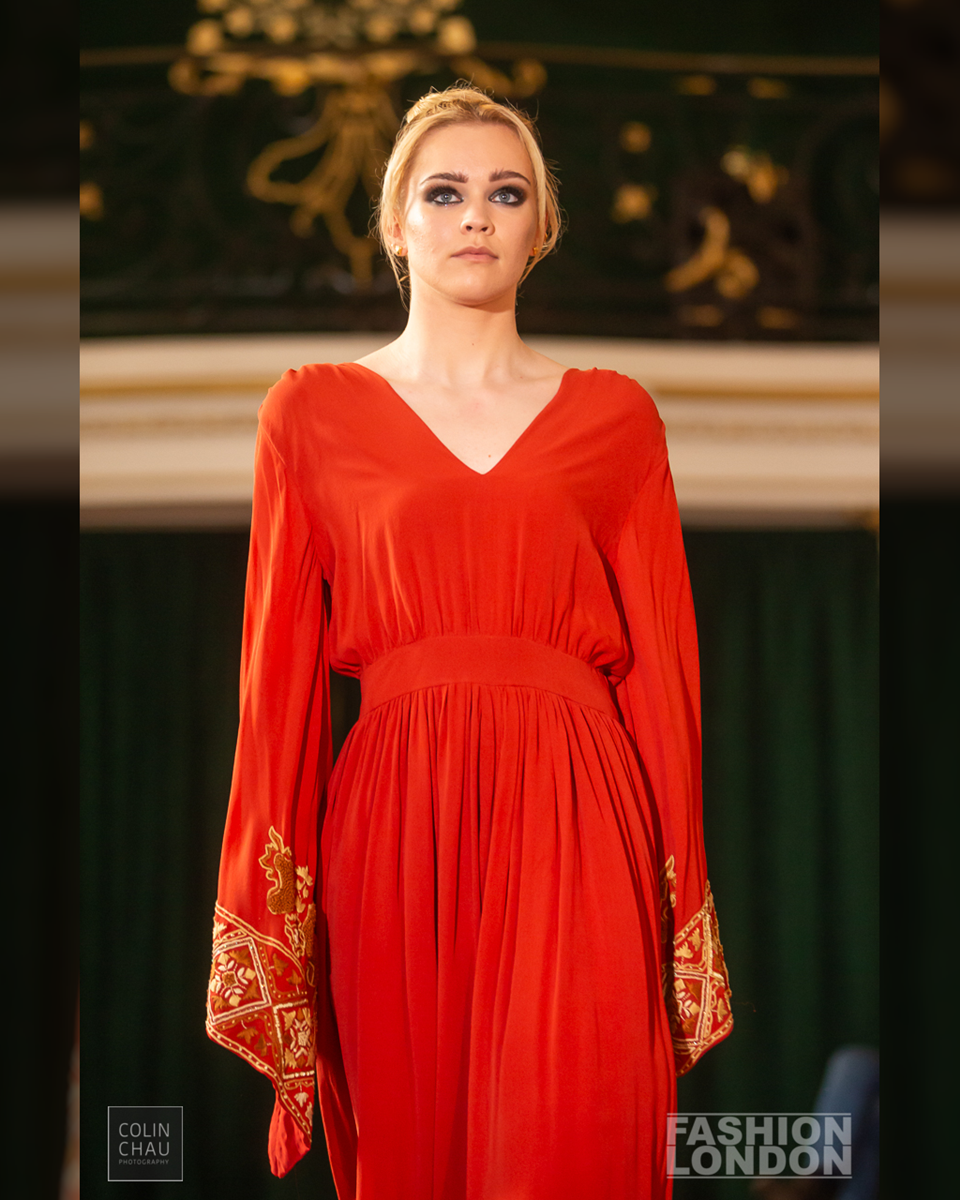
Omar Mansoor Fashion Show at the Emabassy of Pakistan in Paris, Paris Fashion Week Event.
♦ How did the symbolism of red clay pottery from the Indus Valley influence the textures and motifs of the garments?
The earthy tones of red clay pottery inspired the warm colour palette of the collection, reflecting the Indus Valley’s deep connection to the land. The matte, textured fabrics evoke the tactile nature of pottery, while the symmetry and organic lines in the designs bridge ancient artistry with modern fashion, embodying timeless elegance.
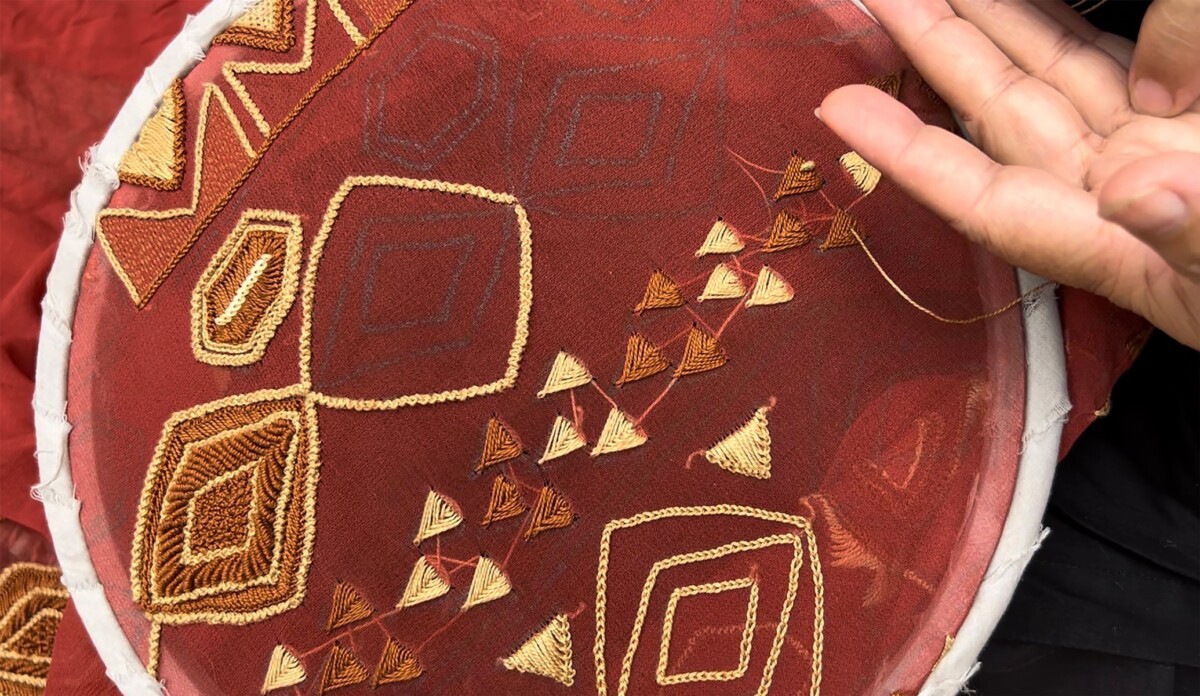
♦ What do earthy tones and handcrafted details mean to you personally beyond their historical references?
Earthy tones and handcrafted details represent quiet luxury and enduring elegance. They evoke authenticity and intentionality, offering a departure from fast fashion trends. These elements speak to the beauty of slow craftsmanship and the value of human touch in an increasingly automated world.
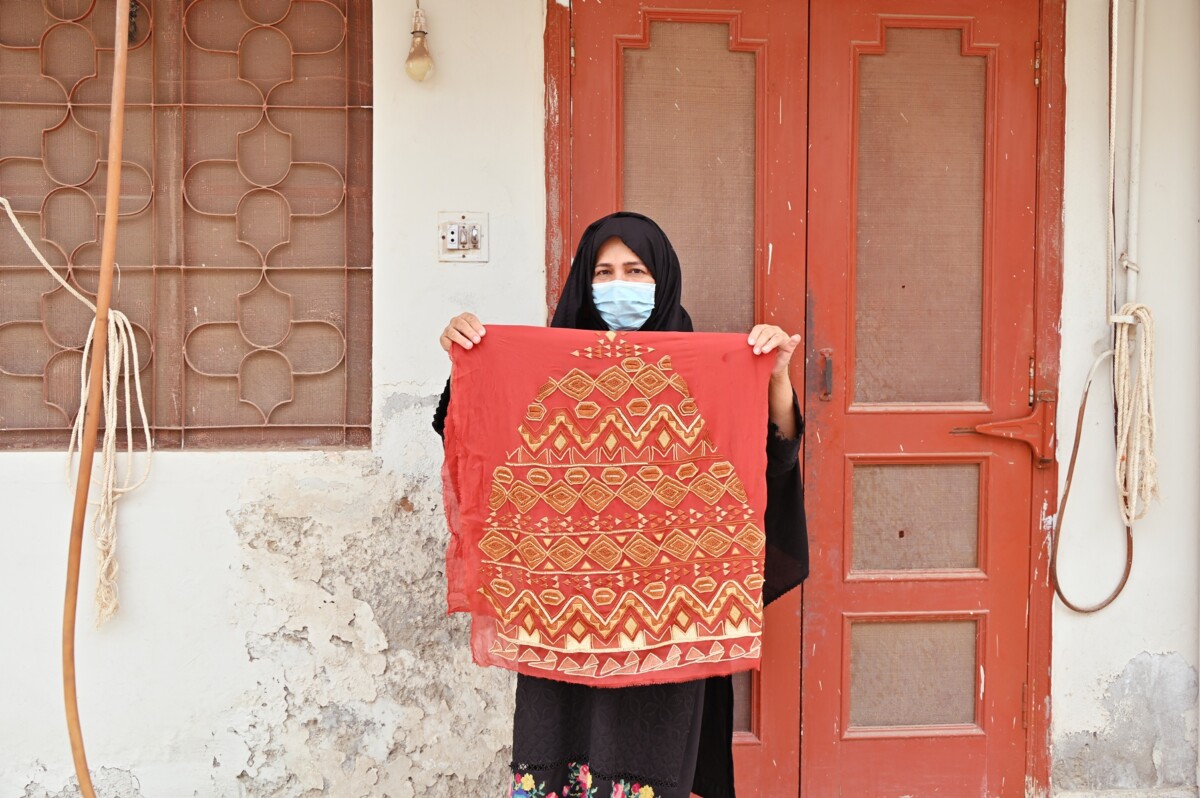
♦Amina Zahid
♦How do you balance paying tribute to cultural roots and infusing contemporary design in the Meluhas Collection? Could you elaborate on the principles that guide your design process in this regard?
In the Meluhas Collection, the balance lies in honouring the heritage of the Indus Valley while making it accessible to modern-day consumers. The designs are timeless and wearable, ensuring they resonate with tradition and contemporary sensibilities. It’s about creating pieces that blend classical elements with modern sophistication.
♦ What actions did you take to ensure the collection is beautiful and environmentally friendly?
Sustainability is at the core of Meluhas. We used natural, biodegradable fabrics and low-impact dyes, supporting artisans with traditional techniques that require less energy. The collection focuses on timeless designs that encourage long-term wear, minimize waste, and embrace ethical production practices.
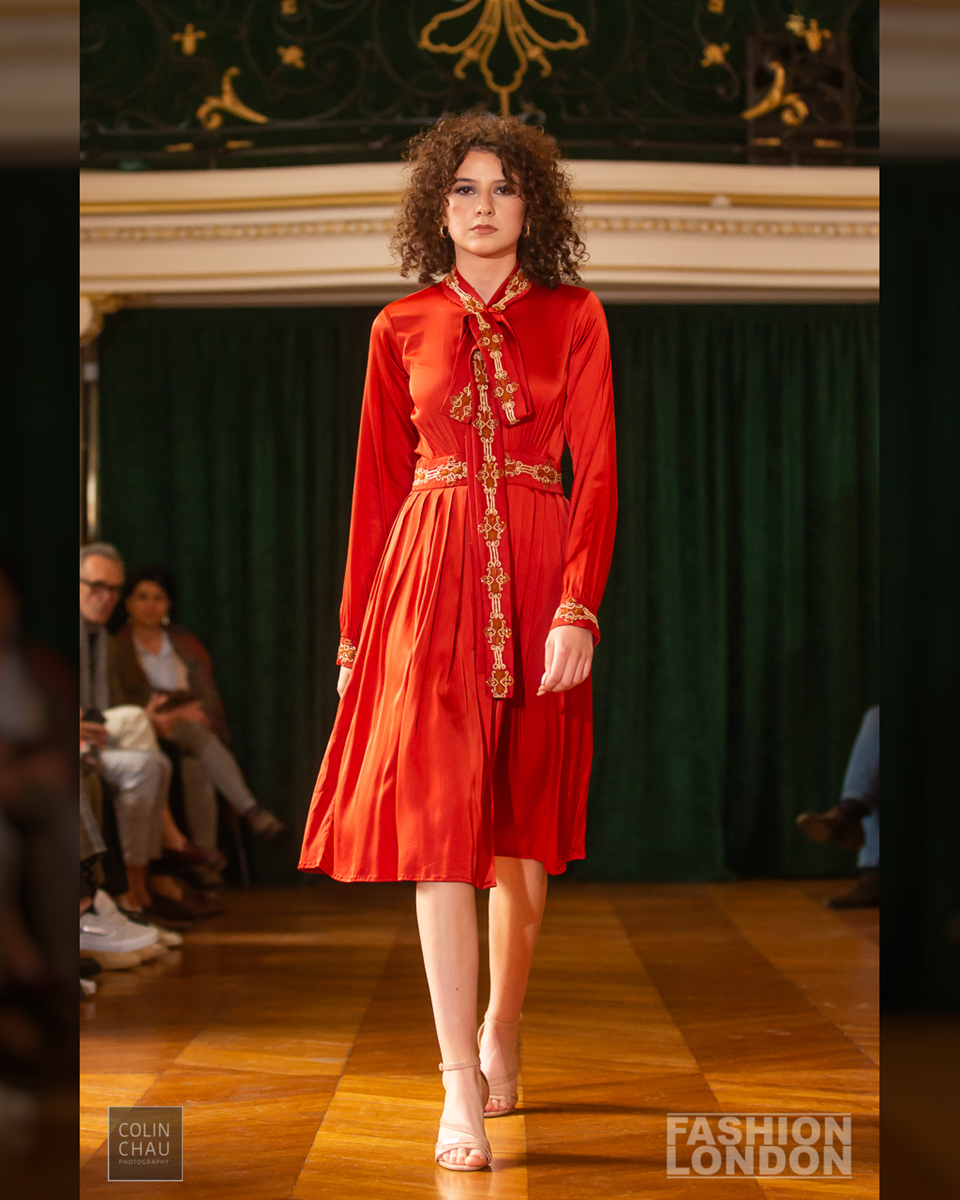
♦How does your collaboration with the Kaarvan Crafts Foundation contribute to a circular fashion model?
Our collaboration with the Kaarvan Crafts Foundation is central to the collection’s commitment to circular fashion. Helping rural women artisans gain skills and market access allows them to create products sustainably. This approach preserves traditional crafts and supports ethical production. This partnership supports a more inclusive and responsible fashion industry.
♦ What does being a Goodwill Ambassador for Kaarvan mean to you, and how has it shaped your design philosophy?
Being a Goodwill Ambassador for Kaarvan is a deep commitment to preserving cultural heritage and empowering artisans. It’s reshaped my design philosophy, reinforcing that fashion should be intentional ethical and respect tradition and craftsmanship. It has taught me that true luxury is not just in the beauty of a piece but in its purpose and the story it tells.
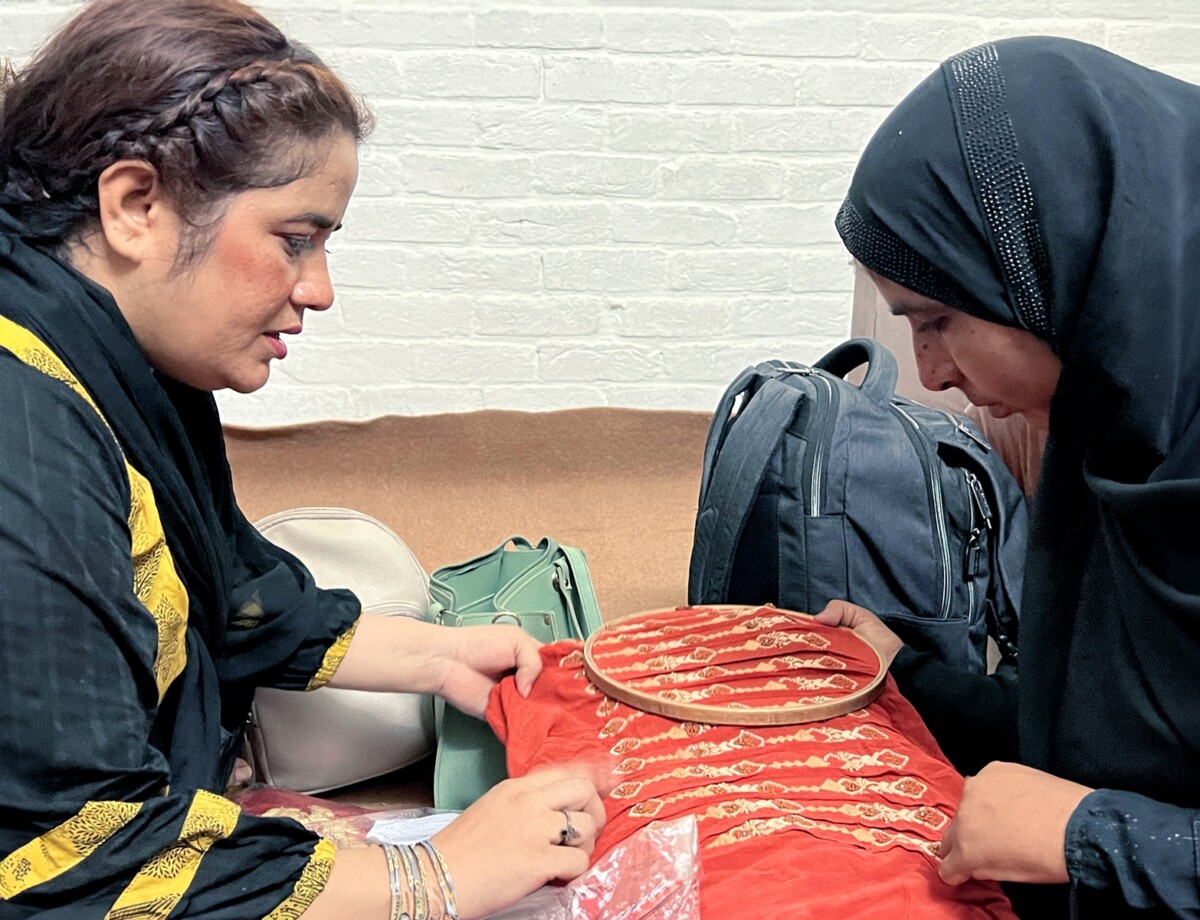
♦Noureen Kousar – Sajiida Bano
♦ Why is economic empowerment through fashion a central part of your mission, and how do you measure its impact?
Economic empowerment through fashion is key to breaking cycles of poverty and supporting artisans. Kaarvan provides artisans the skills and tools to achieve financial independence, empowering them to change their futures. We measure impact through the sustainability of their craft, improved social mobility, and the preservation of their heritage.
♦ What do the endorsements from the British High Commissioner and UNESCO representatives mean for the visibility of your work?
The endorsements from the British High Commissioner and UNESCO have been invaluable in amplifying the visibility of our work. They highlight the importance of reviving traditional crafts, recognizing grassroots artisans, and supporting local communities. Their support lends credibility to our mission and opens doors for meaningful collaborations.
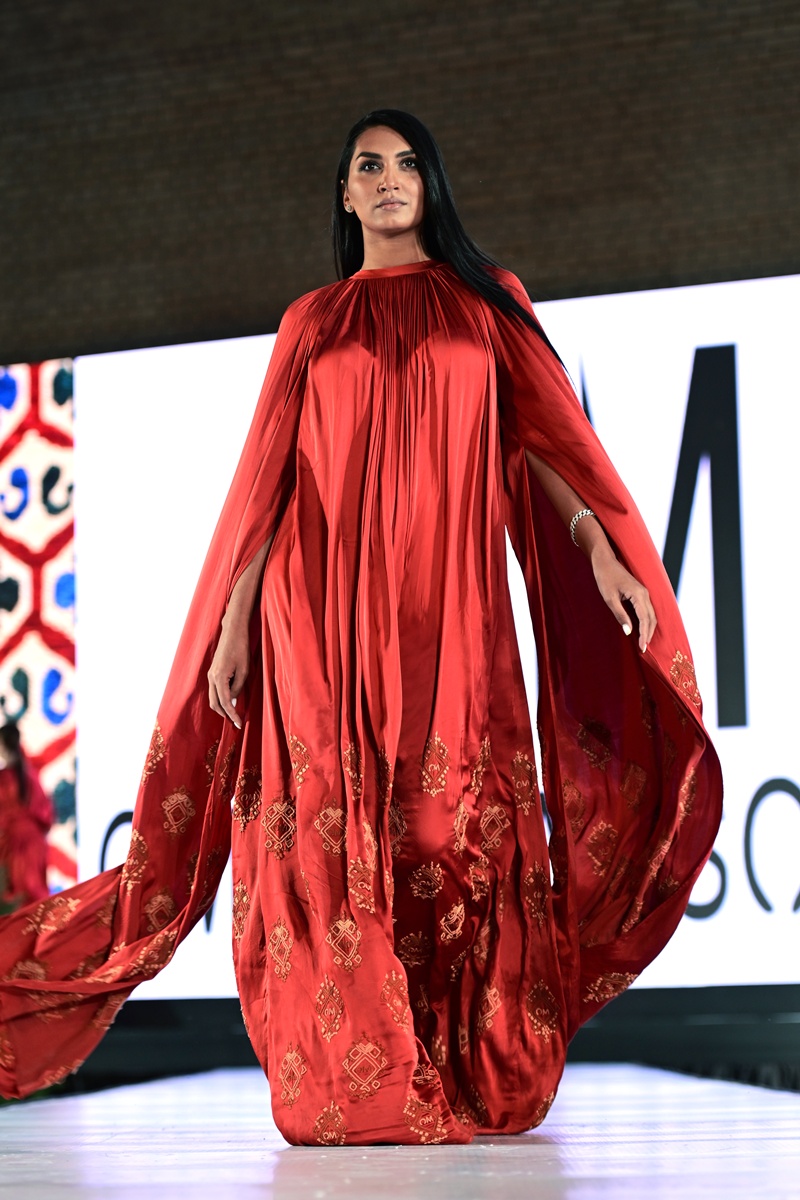
photo credits® Husniddin Ato.
♦ How has this collection and initiative changed the global fashion industry’s perception of grassroots artisans?
This collection has helped elevate grassroots artisans by showcasing their role in creating authentic, sustainable fashion. We’ve shifted the conversation from the margins to the centre, showing that true luxury lies in the hands of those who preserve culture and craft. The collection emphasizes artisans as creators, not just producers.
♦ What role do you envision your brand playing in redefining luxury fashion for the future? Share your vision and how you plan to achieve it.
I envision redefining luxury by integrating sustainability, cultural preservation, and ethical craftsmanship. Luxury should not be about exclusivity but about authenticity and lasting value. Through collaborations with artisans and a commitment to circular fashion, we aim to create pieces that transcend trends, preserving heritage while promoting environmental responsibility.
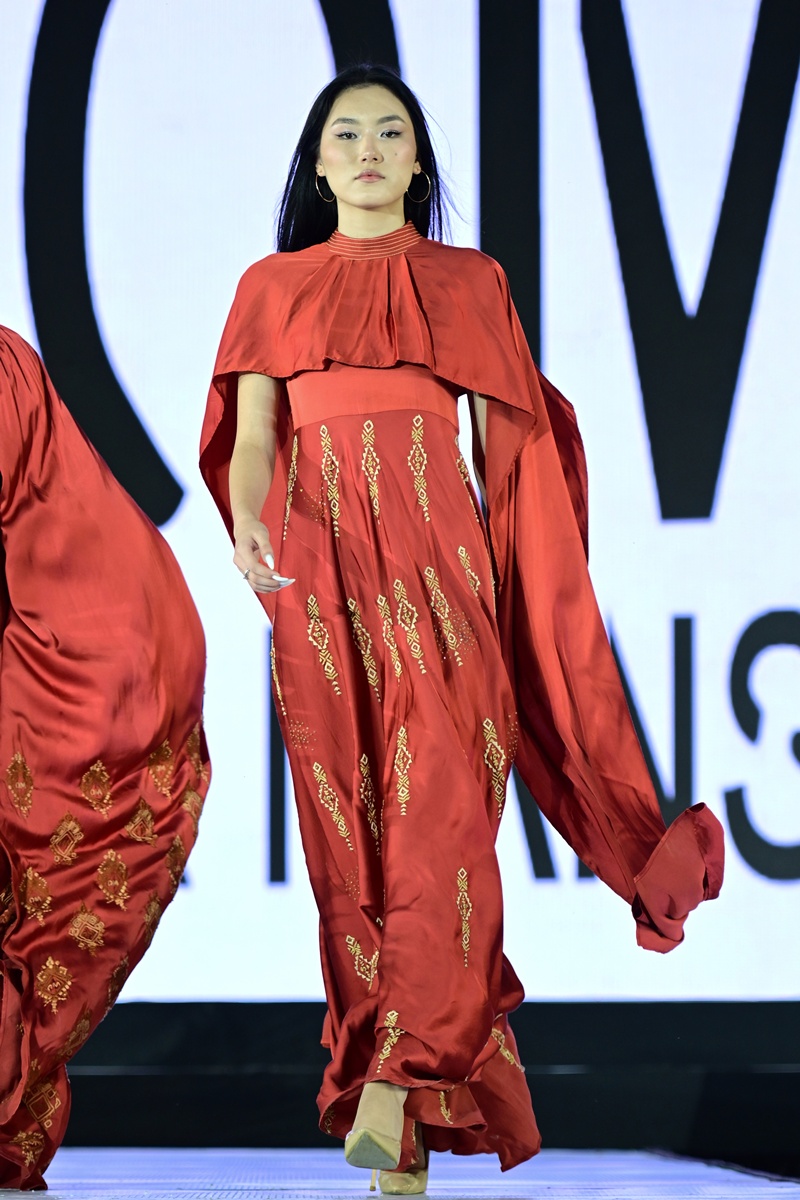
photo credits® Husniddin Ato.
♦Why is it essential for you to highlight the artisans on social media? How has the #WhoMadeMyClothes campaign developed under your leadership?
Highlighting artisans on social media ensures they receive the recognition they deserve. Through the #WhoMadeMyClothes campaign, we’ve made a conscious effort to name and tag these artisans, bridging the gap between traditional craftsmanship and the global fashion market. This transparency fosters a deeper connection between consumers and the makers of their garments.
♦Hafsa Fisha – Nusrat Sultana
♦ How do you hope consumers will chnage their behaviour after learning about your collection and the stories behind each piece?
Consumers will move from passive consumption to intentional support for local artisans. By sharing the stories of the women behind each piece, we encourage a shift towards valuing craftsmanship over mass production. Fashion should be an act of care that values people, preserves heritage, and promotes a more sustainable and equitable industry.
♦Rubina Javed – Shazia Aqeel
♦ What message do you want to share by collaborating with the Kaarvan Craft Association during the International Fashion Week Calendar?
By collaborating with the Kaarvan Crafts Foundation during the International Fashion Week Calendar, I want to send a powerful message: true luxury relies on transparency, respect, and craftsmanship. This partnership highlights the artisans behind each piece, challenging the fashion industry to rethink its values and embrace a more sustainable, inclusive, and heritage-driven future.
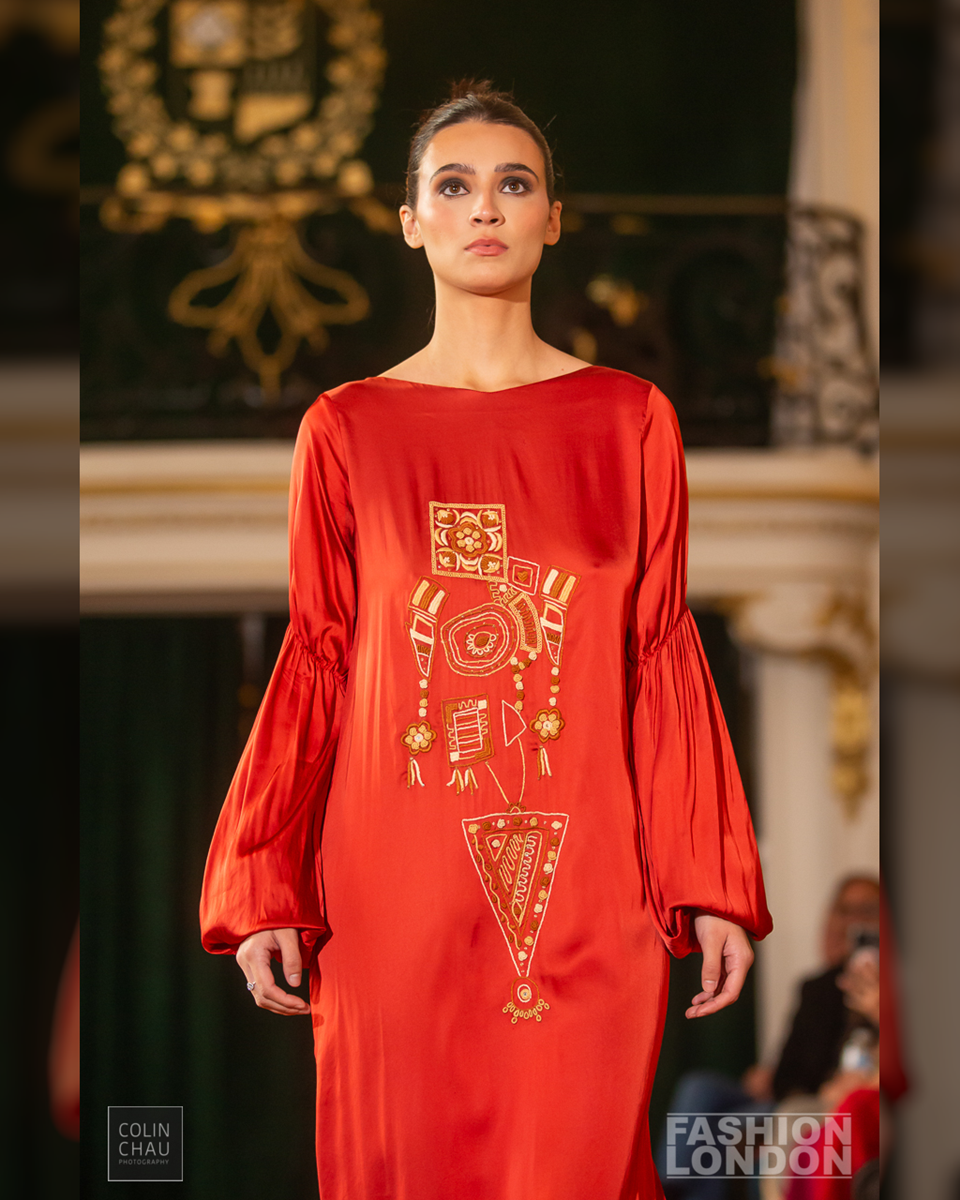
Omar Mansoor Fashion Designer New Collection: A Global Call to Empower Women.
Photo credits Colin Chau
